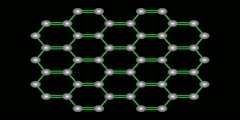Lec 26 - Van't Hoff's Tetrahedral Carbon and Chirality
"Lec 26 - Van't Hoff's Tetrahedral Carbon and Chirality" Freshman Organic Chemistry (CHEM 125) With his tetrahedral carbon models van't Hoff explained the mysteries of known optical isomers possessing stereogenic centers and predicted the existence of chiral allenes, a class of molecules that would not be observed for another sixty-one years. Symmetry operations that involve inverting an odd number of coordinate axes interconvert mirror-images. Like printed words, only a small fraction of molecules are achiral. Verbal and pictorial notation for stereochemistry are discussed. 00:00 - Chapter 1. Interpreting the Rotations of Light for Optically Active Compounds 09:25 - Chapter 2. Van't Hoff's Proof of the Existence of Chiral Allenes 19:57 - Chapter 3. Superimposition, Mirror Images and Handedness: Chirality in Alice's Looking Glass 36:24 - Chapter 4. How Special is Chirality? 41:04 - Chapter 5. Conclusion: Exploring Stereochemistry Complete course materials are available at the Open Yale Courses website: http://open.yale.edu/courses This course was recorded in Fall 2008.
Video is embedded from external source so embedding is not available.
Video is embedded from external source so download is not available.
Channels: Chemistry (General)
Tags: Allene Chirality Meso Symmetry operation
Uploaded by: yalefreshorganic ( Send Message ) on 05-09-2012.
Duration: 48m 26s
Here is the next lecture for this course
The Devastation of Evolution - Chirality
09:16 | 3025 viewsLec 19 - Introduction to Chirality
06:46 | 2298 viewsLec 25 - Models in 3D Space (1869-1877); ...
49:02 | 2623 viewsCarbon video - Periodic Table of Videos
10:03 | 6602 viewsNurseReview.Org - Animation on Carbon Dio ...
02:05 | 14459 viewsCarbon Nanotube Muscle #4
00:25 | 6615 viewsCarbon nanotube muscle #3
00:36 | 6172 viewsCarbon nanotube muscle #2
00:17 | 5782 viewsCarbon Nanotube Muscle #1
00:24 | 6550 viewsCarbon Allotropes
09:57 | 16454 viewsCarbonic acid is formed when carbon dioxi ...
01:19 | 21979 viewsAll About A Carbon Atom
00:23 | 6294 viewsAll About Carbon Atom Part - 2
00:33 | 4379 viewsCarbon And Carbon Compounds
09:27 | 7651 viewsKeeping Up With Carbon
05:38 | 3916 viewsNo content is added to this lecture.
This video is a part of a lecture series from of Yale
Lecture list for this course
Lec 2 - Force Laws, Lewis Structures and Resonance
Lec 3 - Double Minima, Earnshaw's Theorem and Plum-Puddings
Lec 4 - Coping with Smallness and Scanning Probe Microscopy
Lec 6 - Seeing Bonds by Electron Difference Density
Lec 7 - Quantum Mechanical Kinetic Energy
Lec 8 - One-Dimensional Wave Functions
Lec 9 - Chladni Figures and One-Electron Atoms
Lec 10 - Reality and the Orbital Approximation
Lec 11 - Orbital Correction and Plum-Pudding Molecules
Lec 12 - Overlap and Atom-Pair Bonds
Lec 13 - Overlap and Energy-Match
Lec 14 - Checking Hybridization Theory with XH_3
Lec 15 - Chemical Reactivity: SOMO, HOMO, and LUMO
Lec 16 - Recognizing Functional Groups
Lec 17 - Reaction Analogies and Carbonyl Reactivity
Lec 18 - Amide, Carboxylic Acid and Alkyl Lithium
Lec 19 - Oxygen and the Chemical Revolution (Beginning to 1789)
Lec 20 - Rise of the Atomic Theory (1790-1805)
Lec 21 - Berzelius to Liebig and Wöhler (1805-1832)
Lec 22 - Radical and Type Theories (1832-1850)
Lec 23 - Valence Theory and Constitutional Structure (1858)
Lec 24 - Determining Chemical Structure by Isomer Counting (1869)
Lec 25 - Models in 3D Space (1869-1877); Optical Isomers
Lec 27 - Communicating Molecular Structure in Diagrams and Words
Lec 28 - Stereochemical Nomenclature; Racemization and Resolution
Lec 29 - Preparing Single Enantiomers and the Mechanism of Optical Rotation
Lec 30 - Esomeprazole as an Example of Drug Testing and Usage
Lec 31 - Preparing Single Enantiomers and Conformational Energy
Lec 32 - Stereotopicity and Baeyer Strain Theory
Lec 33 - Conformational Energy and Molecular Mechanics
Lec 34 - Sharpless Oxidation Catalysts and the Conformation of Cycloalkanes
Lec 35 - Understanding Molecular Structure and Energy through Standard Bonds
Lec 36 - Bond Energies, the Boltzmann Factor and Entropy
Lec Last - Potential Energy Surfaces, Transition State Theory and Reaction Mechanism
















